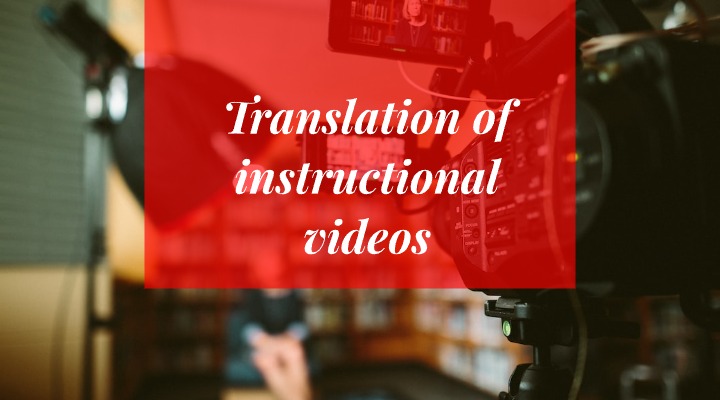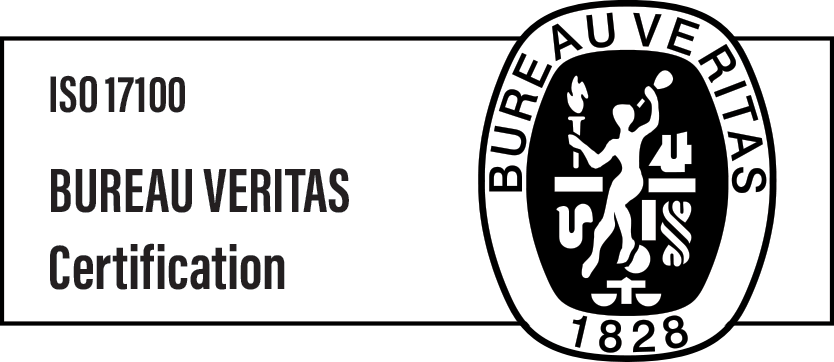Translation of instructional videos

Translation of instructional videos
Instructional videos play a huge role in a number of sectors – from online learning to heavy industry. If your company needs to train and educate employees or users in many different countries, instructional videos are the way to go. However, when reaching an international audience, it’s crucial to pay attention to high-quality translation and localization. And this is where our role begins.
There is no doubt that instructional videos have revolutionized education and knowledge sharing. They provide a high-quality visual learning experience that often proves to be more engaging and effective compared to traditional textual resources. Getting acquainted with the material using more than one sense is definitely more effective and engaging.
Let’s have a look at how your company can benefit from the translation of instructional videos.
Where are instructional videos used?
The shortest answer is everywhere. You can use instructional videos to educate your employees, users and customers. They work great when it comes to:
- Learning a new language
- Understanding how a given device or tool works
- Learning how to use a new piece of software
- Educating the audience on different aspects of the law or science
- And even assembling furniture!
And thanks to video platforms such as YouTube, you can publish and share your videos for free and reach audiences in many different countries.
Why instructional videos are so beneficial?
There are a few reasons to consider. First of all, thanks to them, your audience can learn at their own pace, from the comfort of their homes, and often at little to no cost. This is especially true now, in the post-covid world where remote learning has become a new standard of digital education.
Secondly, you can do a specific piece of training once and show it to thousands of students/customers, which enables you to save a lot of time. You don’t have to organise dozens of different workshops – even thousands of students can access your training material at the same time.
Lastly, when done properly, instructional videos can be engaging and transfer knowledge in a very effective way.
No wonder so many companies and institutions use them. However, if you want to use the same video for more than one group of language speakers, you need to take care of good translation.
How to translate instructional videos
First off, you need to have captions/subtitles in your videos. If you don’t, voiceover or dubbing are two other options, but they are more expensive and require a professional sound studio (as well as voice actors). In nine out of ten cases, subtitles are enough for standard instructional videos.
You can create subtitles on your own or use automatic subtitle creation software. Such programs have many advantages! They allow you to quickly create subtitles in a given language along with time markers. However, that’s just the first step. Subtitles created automatically usually have many typos or use wrong terms (e.g., sounding similar). This is where the role of a translation agency starts. We analyse automatically-created subtitles and check the correctness of used timestamps. In many cases, the length of the subtitles also needs to be verified. Sometimes, sentences are unnecessarily divided into several lines, and sometimes, the opposite is true, and the displayed subtitle is too long and, therefore, difficult to read.
Now, suppose you already have an instructional video and subtitles for it. Now, it’s time to translate them into a different language. This is where the translator’s role begins. Each subtitle is translated and localised into a target language to ensure the final translation is not just accurate and correct from a technical standpoint but also natural and easy to understand by a different target audience.
Once this part is done, the translation files are sent for proofreading by a native speaker.
All in all, a translation agency has to:
- Watch and understand the goal of each training video
- Verify the correctness of timestamps
- Verify the correctness of the generated subtitles
- Make necessary corrections
- Translate the optimised subtitles to a foreign language
- Verify the correctness of translation with a native speaker
Depending on the complexity, length and the number of videos, such a service can take up to several weeks. And there are also several challenges along the way that we need to pay attention to.
Challenges in translating instructional videos
CULTURAL SENSITIVITY
When translating instructional videos, it is essential to consider cultural nuances. An instructional video that resonates with one culture may not necessarily appeal to another. This involves not only translating words but also adapting the content to the cultural context of the target audience. This is what localisation is for.
TECHNICAL TERMINOLOGY
Many instructional videos, especially those in technical or industrial fields, involve the use of jargon and technical terminology. Translating these terms accurately is crucial to ensure the video maintains its high educational value. If your company has a glossary of such terms, it’s a great idea to share it with your chosen translation agency.
SYNCHRONIZATION
In instructional videos, the spoken words are usually synchronized with the visuals (e.g., charts or steps of the process). Translators must ensure that the translated content matches the timing of the original, which can be challenging.
VISUAL ELEMENTS
Translating instructional videos isn’t limited to spoken or written words; it also involves translating visual elements, such as on-screen text and diagrams. If your videos contain such materials, it’s important to disclose this fact when asking for a quote from an LSP company.
Best practices in translating instructional videos
Our role is to provide our clients with high-quality video translation. That’s why we adhere to several important best practices to ensure the high quality of the end product:
QUALIFIED TRANSLATORS
We work only with qualified and experienced translators who are not only proficient in the target language but also understand the subject matter of the video as educational media.
LOCALISATION
We never just translate the video content; localisation is an equally important aspect of our work. Thanks to this service, we can adapt the subtitles to the cultural preferences and specificity of the target audience. It may require modifying visuals, using culturally relevant examples, or even changing the tone of the narration. But at the end of the day, it surely is worth the effort.
QUALITY ASSURANCE
We follow and implement rigorous quality assurance procedures, which involve reviewing the translated content to make sure it’s accurate and natural and verifying the text-voice synchronization.
Let’s translate your instructional videos
Are you currently looking for an LSP company that will be able to translate your instructional videos? If so, we encourage you to reach out and ask for a free and non-binding quote. We can assure you that we will do everything we can to ensure the top quality of your translated video content.
We’re waiting for your application!

